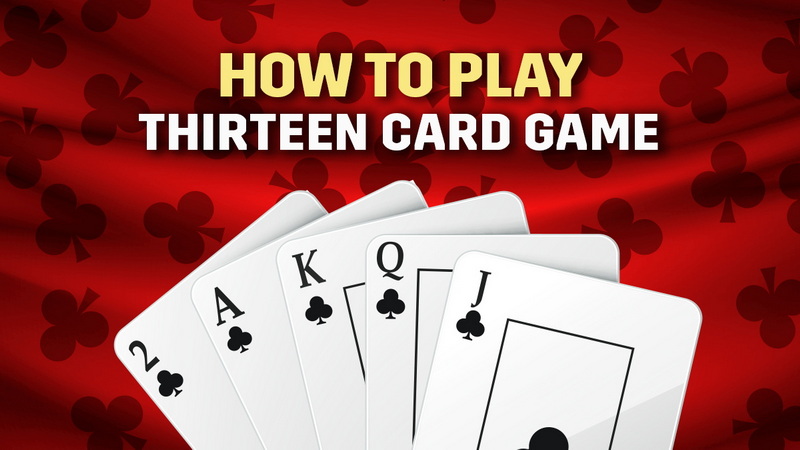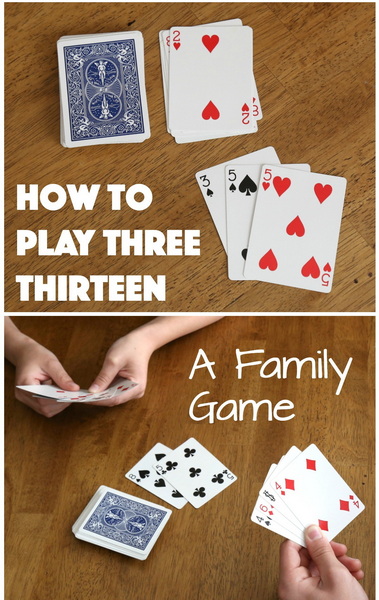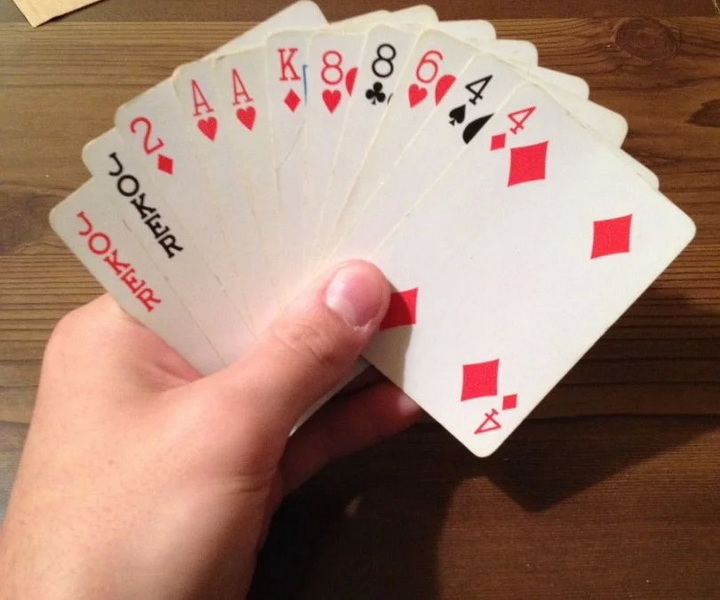Content Menu
● Overview of Thirteen
● Game Components
● Setup
● Card Rankings
● Gameplay Mechanics
>> Starting Play
>> Types of Plays
>> Playing Cards
● Winning Conditions
● Instant Win Conditions
● Strategies for Success
● Advanced Strategies
● Common Mistakes to Avoid
● Conclusion
● Questions and Answers
>> 1. What is Thirteen?
>> 2. How do you win in Thirteen?
>> 3. What are the different types of plays in Thirteen?
>> 4. What happens if I pass my turn?
>> 5. Can I win instantly in Thirteen?
● Citations:
Thirteen, also known as Tien Len, is a popular card game that originated in Vietnam. It is played with a standard 52-card deck and is typically enjoyed by four players. The objective of the game is straightforward: be the first player to get rid of all your cards. This article will provide a comprehensive guide on how to play Thirteen, including rules, strategies, and tips for mastering the game.

Overview of Thirteen
Thirteen is a trick-taking game that combines elements of strategy and luck. Players must carefully manage their cards while trying to outsmart their opponents. The game is fast-paced, making it an exciting choice for gatherings with friends or family.
Game Components
To play Thirteen, you will need:
- A standard 52-card deck
- Four players
- Pen and paper for scorekeeping (optional)
Setup
1. Choosing the Dealer: Select a dealer by having each player draw one card from a shuffled deck. The player with the lowest card becomes the dealer.
2. Dealing Cards: The dealer shuffles the deck and deals 13 cards to each player in a clockwise manner.
3. Starting the Game: The player who has the 3 of Spades starts the game by playing that card as part of their first move.
Card Rankings
Understanding card rankings is crucial in Thirteen:
- Card Values: The ranking from highest to lowest is as follows:
- 2 (highest)
- Ace
- King
- Queen
- Jack
- 10
- 9
- 8
- 7
- 6
- 5
- 4
- 3 (lowest)
- Suit Rankings: Suits are also ranked from highest to lowest:
- Hearts
- Diamonds
- Clubs
- Spades
Gameplay Mechanics
Starting Play
The player with the 3 of Spades must start the first round. They can play this card alone or as part of a combination (e.g., pairs, triples). Play then proceeds clockwise.
Types of Plays
Players can play cards in various combinations:
- Single Card: A single card (e.g., 7♠).
- Pair: Two cards of the same rank (e.g., J♥, J♦).
- Triple: Three cards of the same rank (e.g., Q♣, Q♦, Q♥).
- Run (Sequence): Three or more consecutive cards in ascending order (e.g., 10♠, J♣, Q♦).
- Bomb: A special play that can clear the pile:
- Four of a kind.
- A double sequence (two sequences of three or more cards of the same rank).
Playing Cards
1. On your turn, you must play a card or combination that matches or exceeds the previous play's type and value.
2. If you cannot play a higher card or choose not to, you must pass. Once all players pass consecutively, the last player to play clears the pile and starts a new round.
3. If you play a bomb, you can clear all previously played cards and start again.
4. The round continues until one player has no cards left.

Winning Conditions
The first player to discard all their cards wins the game. If multiple rounds are played, scoring can be implemented where points are awarded based on finishing order:
- First place: 3 points
- Second place: 2 points
- Third place: 1 point
Instant Win Conditions
A player can win instantly if they are dealt all four 2s or a complete sequence from 3 to Ace (known as a "dragon").
Strategies for Success
To excel at Thirteen, consider these strategies:
- Card Management: Keep track of which cards have been played and adjust your strategy accordingly.
- Playing Bombs Wisely: Use bombs strategically to clear piles when it benefits you most.
- Observing Opponents: Pay attention to your opponents' plays and try to predict their strategies based on their remaining cards.
- Passing Intelligently: Sometimes passing can be beneficial if it allows you to save stronger cards for later rounds.
Advanced Strategies
As you become more familiar with Thirteen, consider implementing these advanced strategies to improve your gameplay further:
- Reading Opponents: Observe your opponents' habits and tendencies. If they tend to hold onto high-value cards until late in the game, adjust your strategy accordingly by playing more aggressively early on.
- Bluffing and Misdirection: Occasionally play weaker hands early on to mislead opponents about your overall strength. This tactic can cause them to underestimate your hand later in the game.
- Timing Your Plays: Be strategic about when you choose to play certain combinations. Holding onto powerful combinations until critical moments can give you an advantage over opponents who may have already exhausted their strong cards.
- Understanding Risk vs. Reward: Weigh the potential benefits of playing high-value combinations against the risk of leaving yourself vulnerable if opponents can counter them effectively.
Common Mistakes to Avoid
Even experienced players can fall into traps that hinder their chances of winning. Here are some common mistakes to avoid:
- Playing Too Aggressively Early On: While it's important to make strong plays, being overly aggressive at the beginning can lead to running out of powerful combinations too soon.
- Neglecting Card Counting: Failing to keep track of which cards have been played can leave you at a disadvantage when trying to determine what remains in your opponents' hands.
- Ignoring Suit Rankings: Remember that suits matter in breaking ties between ranks; neglecting this can lead to missed opportunities during gameplay.
Conclusion
Thirteen is an engaging and strategic card game that offers hours of fun for players of all skill levels. By understanding the rules and employing smart strategies, you can enhance your gameplay experience and increase your chances of winning. Whether you're playing casually with friends or in more competitive settings, mastering Thirteen will surely impress your fellow players.

Questions and Answers
1. What is Thirteen?
Thirteen is a trick-taking card game played with four players using a standard deck of cards. The goal is to be the first to discard all your cards.
2. How do you win in Thirteen?
You win by being the first player to get rid of all your cards during gameplay.
3. What are the different types of plays in Thirteen?
Players can make single plays, pairs, triples, runs (sequences), or bombs during their turn.
4. What happens if I pass my turn?
If you pass your turn, you cannot play again until all other players have passed and a new combination starts.
5. Can I win instantly in Thirteen?
Yes, if you are dealt all four 2s or a complete sequence from 3 to Ace at the beginning of the game, you win instantly.
Citations:
[1] https://www.youtube.com/watch?v=_wcWAesgVkQ
[2] https://forum.boardgamearena.com/viewtopic.php?t=25828
[3] https://gathertogethergames.com/thirteen
[4] https://www.classicrummy.com/blog/13-card-rummy-tips-and-tricks/
[5] https://www.mplgames.com/blog/thirteen-card-game/
[6] https://playingcarddecks.com/blogs/how-to-play/thirteen-game-rules
[7] https://www.howtoplaystuff.com/how-to-play-13/
[8] https://en.wikipedia.org/wiki/Ti%E1%BA%BFn_l%C3%AAn
[9] https://www.youtube.com/watch?v=z2Jas5t-8Yw
[10] https://gambiter.com/cards/climbing/thirteen.html
































